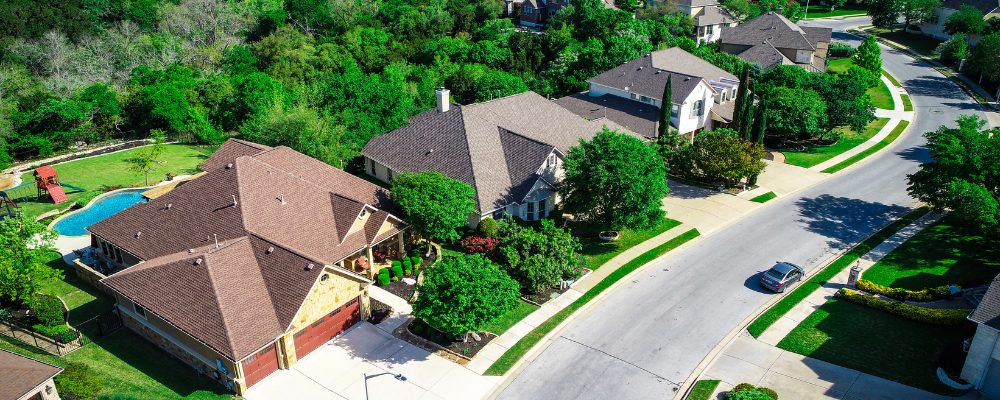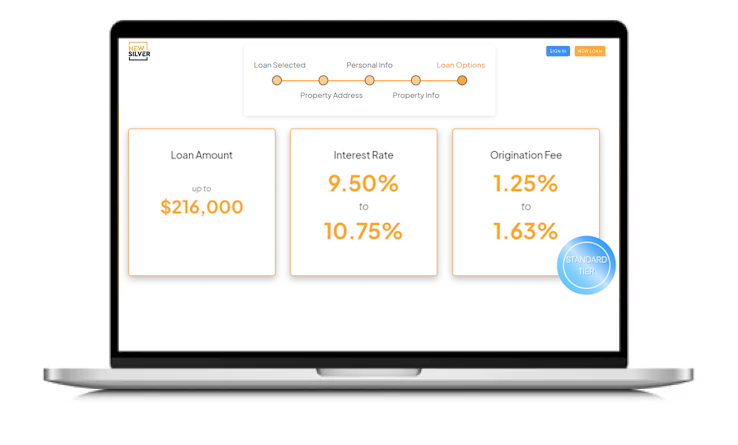The Short Answer
Opportunity Zones (OZs) are designated areas across the U.S. created by the 2017 Jobs Act to encourage investments in economically distressed communities through tax incentives. These zones offer real estate investors, particularly those in the fix-and-flip sector, significant tax benefits, such as deferred capital gains on the Qualified Opportunity Fund, step-up in basis, and potential permanent exclusion of gains if investments are held for a specific period.
To maximize these benefits, investors are advised to thoroughly research a potential qualified Opportunity Zone using tools like the U.S. Department of Treasury’s Community Development Financial Institutions Fund Map, and to engage with local stakeholders. However, investing in OZs comes with challenges, not just the tax perks like deferred capital gains. These challenges include outdated infrastructure, regulatory hurdles, community resistance, and financial risks. Successful navigation requires detailed due diligence, flexibility in exit strategies, and an understanding of the socio-economic dynamics at play.
Beyond profit, investing in a qualified Opportunity Zone can have a transformative impact on communities. Establishing an anchor property can serve as a catalyst for broader revitalization, offering a path to both financial gain and lasting community improvement. Investors who contribute to these communities through thoughtful development can help foster innovation and social cohesion, leaving a positive legacy.
Jump To
In the world of real estate investment, Opportunity Zones (OZs) have emerged as a compelling value proposition, promising both financial growth and community transformation. Let’s explore how real estate investors can navigate this intricate landscape and unearth golden opportunities.
What Is An Opportunity Zone?

Opportunity Zones, created by the Jobs Act of 2017, introduced a novel prospect for real estate investors, especially those involved in the fix and flip industry. These zones are designated communities across the United States where investments made under specific conditions offer advantageous tax treatment. That bill sparked a gold rush among real estate investors.
As David Wessel, Director of the Hutchins Center on Fiscal and Monetary Policy, noted in the New York Times, “Congress tucked a provision into the 2017 tax bill that led to the creation of 8,764 tax havens across the United States called opportunity zones.” The concept was to leverage capital-gains tax breaks to incentivize investors to channel resources into underprivileged neighborhoods.
The legislation created a gold rush stimulus economic opportunity. OZs unleashed business openings for the alert real estate investor, providing more opportunities for the wealthy to cut their tax bills while enjoying potential windfalls from well-timed and executed flips.
That’s 8,764 good reasons for fix and flippers to start researching hidden “gold in them-thar hills.” But keep in mind that for each miner who struck it rich, at least as many ended up as penniless panhandlers left with only their Levis. So, let’s inject some reality checks into these seeming golden Opportunity Zones, exploring the practical benefits as well as the often underemphasized risks.
Opportunity Zone Tax Benefits
In the realm of Opportunity Zone real estate, investors seeking appealing tax incentives should consult the Internal Revenue Service first. The IRS outlines three primary tax benefits of Opportunity Zone real estate investments:
1. Deferred Capital Gains
Investors can delay tax payment on prior gains invested in a Qualified Opportunity Fund (QOF) until the investment is sold or exchanged, or until December 31, 2026, whichever comes first. This is one of the biggest tax incentives, and is also known as deferred capital gains on a Qualified Opportunity Fund. These deferred capital gains on the Qualified Opportunity Fund may well turn out to be limited-time opportunities, so it’s better to strike early. Deferred capital gains are quite the advantage and certainly not something to be overlooked.
2. Step-Up In Basis
The basis of the original investment receives a 10% increase if held for at least 5 years, and an additional 5% increase if held for at least 7 years. This effectively excludes up to 15% of the original gain from taxation.
3. Permanent Exclusion
Hold an investment in a QOF for at least 10 years, and the investor becomes eligible for an increase in basis equal to its fair market value on the date of sale or exchange. This translates to tax-free appreciation, anticipating a happy financial ending.

How To Find Opportunity Zones
Fix and flip investors should heed expert advice to select the right Opportunity Zones for their endeavors.
Alex Shvayetsky, co-founder of New Silver Lending, underscores the need for careful OZ research: “Economic growth, population trends, housing market conditions, zoning laws, potential for rent growth, and project resale value all should be part of your due diligence.”
To aid in research, Shvayetsky strongly advises investors to use the U.S. Department of Treasury’s Community Development Financial Institutions (CDFI) Fund Map as an online compass. This powerful interactive tool enables investors to locate designated Opportunity Zones using search parameters like addresses, cities, counties, or zip codes. It also provides a treasure trove of demographic and economic data, illuminating the potential of each region.
Don’t be an armchair investor. Before any investment decision, walk the streets and inspect the location. Engage local stakeholders—city officials, community leaders, and local businesses—to gain insight into the prospects and challenges of a particular area.
Investors should seek the expertise of professionals like real estate agents, attorneys, and tax advisors familiar with each OZ. Community engagement should also be part of your prep.
Navigating Challenges with Opportunity Zones
When entering distressed communities, expect the unexpected—therefore, the unexpected is expected and you won’t be as caught off-guard in the event something happens. Murphy’s Law seems to apply with uncanny accuracy to real estate ventures, and the OZ space is no exception. Here’s a quick glimpse into some of the problems that could arise and suggestions about how to navigate them.
Infrastructure and Regulatory Hurdles
Investors often come across unexpected infrastructure and regulatory challenges within a qualified Opportunity Zone. These areas tend to have outdated or inadequate infrastructure, ranging from poor road conditions to limited access to essential utilities. Moreover, varying regulations and zoning codes could pose hurdles that delay or complicate the renovation process. The key is to thoroughly research the infrastructure of the area and become well-versed in local regulations before embarking on any fix-and-flip project.
Community Resistance
Don’t be surprised or intimidated if a qualified Opportunity Zone’s community resists changes or repels outsiders; especially if they perceive the projects as gentrification or unwanted disruptions in their communities. Building trust through engagement and transparent communication is vital to overcoming such resistance.
Financial and Market Risks
Real estate is inherently unpredictable, and investing in Opportunity Zones carries its own financial risks. Property values could fluctuate unexpectedly, affecting potential profits. What’s the solution? There are no simple shortcuts. A detailed market analysis, with contingency plans and expert inputs, is essential to mitigate uncertainties.
Limited Exit Strategies
Fix and flip investors often rely on a swift resale to realize profits. But in some Opportunity Zones, a limited buyer pool or unique market conditions might hinder quick property flips. Ensuring flexibility in exit strategies—such as converting to rental properties if resale takes longer than anticipated—is always a prudent option to keep in mind.
Socioeconomic Dynamics
Investors should brace themselves for socioeconomic challenges within Opportunity Zones. These areas may have deeply rooted racial, ethnic, social, and economic issues that impact property values and demand. Being sensitive to and proactive about these dynamics is key to evaluating, and then potentially building a successful fix-and-flip venture in any given location.
Over-optimistic Assumptions
Don’t fall into the trap of overly optimistic assumptions. Seasoned investors know that it can go either way. Anticipate the possibility of rapid property appreciation. Don’t underestimate the scope of renovations required. Conduct thorough due diligence, consult experts, and expect unexpected costs to avoid surprises.
Navigating the road to qualified Opportunity Zones requires a blend of wisdom, adaptability, and readiness. Fix and flip investors can surmount challenges by approaching each project with care, courage, and readiness to adjust their course when needed.

Expanding Community Impact
By engaging in community improvement, Opportunity Zone investment offers a scalable and repeatable path that can lead not only to potential financial gains but also to positive relationships and lasting legacies.
The key to this approach is establishing and promoting a showpiece anchor property, a catalyst for change, and a testimony to the transformative power of qualified Opportunity Zones. This first investment serves as more than just a financial transaction: it becomes a rallying point, a source of inspiration for future endeavors, and a testament to the investor’s commitment to community revitalization.
This can be done on a grand scale as in the major urban renewal projects described below. But even individual real estate investors, including fix and flippers, can create miniature exemplars of the power, beauty, and social benefits of home renovation. Or they can look for successful projects like these, build nearby, and benefit from the improved attractiveness and rising prices that come along with these improvements.
Investors who invest in qualified Opportunity Zones become participants in their chosen community’s narrative. Their contributions transcend profit margins, enriching the lives of residents, fostering innovation, and nurturing social cohesion. By investing not only in properties but also in people, flippers can truly walk the path of transformation.
Individual real estate investors are obviously not the ones who take on the risk level of these mega-projects, but flippers should be especially attentive to such initiatives because of their ripple effects on surrounding neighborhoods. Identify and track such up-and-coming success stories and then “stand on the shoulder of giants” to ride the rising wave of their economic impact locally.



